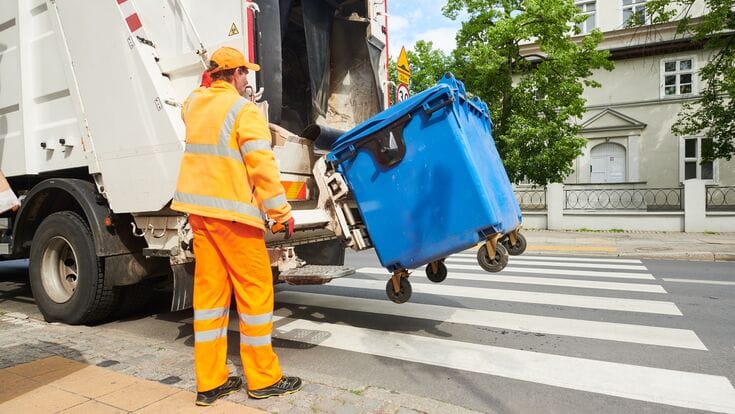
Garbage collection is a vital service that keeps communities clean, safe, and free from health hazards. For residents, this process might seem straightforward—placing trash on the curb and watching it disappear on collection day. However, behind the scenes, waste management companies and city services follow a detailed process to ensure that trash is collected, disposed of, or recycled responsibly. Understanding how affordable trash collection services operate can help residents appreciate the role of waste management and the steps involved in keeping neighborhoods clean.
Step 1: Scheduling and Organizing Routes
The first step in garbage collection involves planning efficient routes for collection trucks. Waste management companies use software to design routes that minimize travel time and fuel consumption. By organizing routes strategically, companies can make garbage collection quicker, reducing environmental impact and keeping operational costs down. Efficient routing allows affordable trash collection services to pass savings on to customers while maintaining reliable and timely pickups.
Garbage collection schedules usually depend on the location. Residential areas typically have weekly or biweekly trash and recycling pickups, while commercial properties may have more frequent service depending on their waste production.
Step 2: Collection Day Preparation
Before collection day, residents are asked to place their trash and recyclables curbside in designated bins or bags, usually the night before or early in the morning. Most municipalities have specific rules for curbside placement, such as:
- Keeping bins accessible: Bins should be placed where collection trucks can easily access them.
- Separating waste and recyclables: Many areas require residents to separate trash from recyclables, making it easier to process waste efficiently.
- Following guidelines for bulky items: For larger items like furniture or appliances, residents may need to schedule special pickups or follow specific placement rules.
Following these guidelines helps ensure a smooth and timely collection, as drivers can quickly access the bins and move on to the next location.
Step 3: Waste Collection by Type
Garbage collection trucks typically pick up various types of waste in separate loads, depending on the type of collection service offered in the area. Here’s a look at some of the most common waste categories and how they’re managed:
1. General Trash
General trash includes regular household waste, such as food scraps, packaging, and non-recyclable items. Collection trucks equipped with compactors pick up these items, which are then transported to a landfill or waste-to-energy facility. Once there, waste is either buried according to environmental standards or incinerated to generate energy.
2. Recyclables
Recyclables are usually collected separately to ensure proper processing. Residents are encouraged to place items like cardboard, glass, plastic, and metal in designated recycling bins. The collected recyclables are then taken to a recycling facility where they’re sorted, cleaned, and processed for reuse.
Recycling is a key component of affordable trash collection services, as it reduces the amount of waste sent to landfills, lowering disposal costs and helping the environment.
3. Yard Waste and Organic Waste
In some areas, yard waste, like leaves, branches, and grass clippings, is collected separately from general trash. Organic waste is composted at a composting facility, turning it into a valuable resource for soil enrichment rather than occupying space in a landfill.
Step 4: Waste Sorting and Processing
After collection, garbage and recyclables are taken to a transfer station or processing facility. Here, items are sorted according to their category:
- Landfill-bound waste: Non-recyclable items go to landfills, where they’re compacted and buried. Modern landfills are designed with liners and drainage systems to prevent contamination of the surrounding environment.
- Recyclables: Items collected for recycling are further sorted into different materials (e.g., paper, plastic, metal) before being processed and sold to manufacturers who repurpose them into new products.
- Compostable waste: Organic materials are sent to composting facilities, where they decompose and are later used as soil amendments.
Sorting and processing waste after collection is crucial for an efficient waste management system, enabling companies to provide affordable trash collection services by maximizing resource recovery.
Final Thoughts: The Value of Effective Garbage Collection
Garbage collection is more than just picking up trash; it’s a well-coordinated system that involves route planning, waste sorting, and environmentally responsible disposal. With the help of affordable trash collection services, communities can enjoy cleaner neighborhoods and a healthier environment, with less waste going to landfills and more materials being recycled or composted. By understanding the stages of garbage collection, residents can support these efforts by following collection guidelines and making sustainable choices at home.


 Ensuring the Safety of Your Wisconsin Home’s Roof: When to Consult a Roofing Expert
Ensuring the Safety of Your Wisconsin Home’s Roof: When to Consult a Roofing Expert  Enhance Your Comfort with Premier Gas Water Heater Installations in Red Wing, Minnesota
Enhance Your Comfort with Premier Gas Water Heater Installations in Red Wing, Minnesota  Creating Inviting Outdoor Spaces: The Benefits of Outdoor Fireplaces in the Twin Cities
Creating Inviting Outdoor Spaces: The Benefits of Outdoor Fireplaces in the Twin Cities  Why Are Real Estate Serviced Apartments An Ideal Investment?
Why Are Real Estate Serviced Apartments An Ideal Investment?  How a Solar Company Designs Custom Solutions for Your Home
How a Solar Company Designs Custom Solutions for Your Home  Creative Uses of LED Strip Lighting for Accent Lighting
Creative Uses of LED Strip Lighting for Accent Lighting  The Benefits of a Fire Pit for Year-Round Outdoor Living
The Benefits of a Fire Pit for Year-Round Outdoor Living  The Role of Minimalist Lighting in Modern Interior Design: Trends and Functional Analysis
The Role of Minimalist Lighting in Modern Interior Design: Trends and Functional Analysis  Top Security Features to Look for in a Garage Door
Top Security Features to Look for in a Garage Door  Comprehensive Guide to Mold Removal in Hunterdon County: Safeguarding Your Home and Health
Comprehensive Guide to Mold Removal in Hunterdon County: Safeguarding Your Home and Health